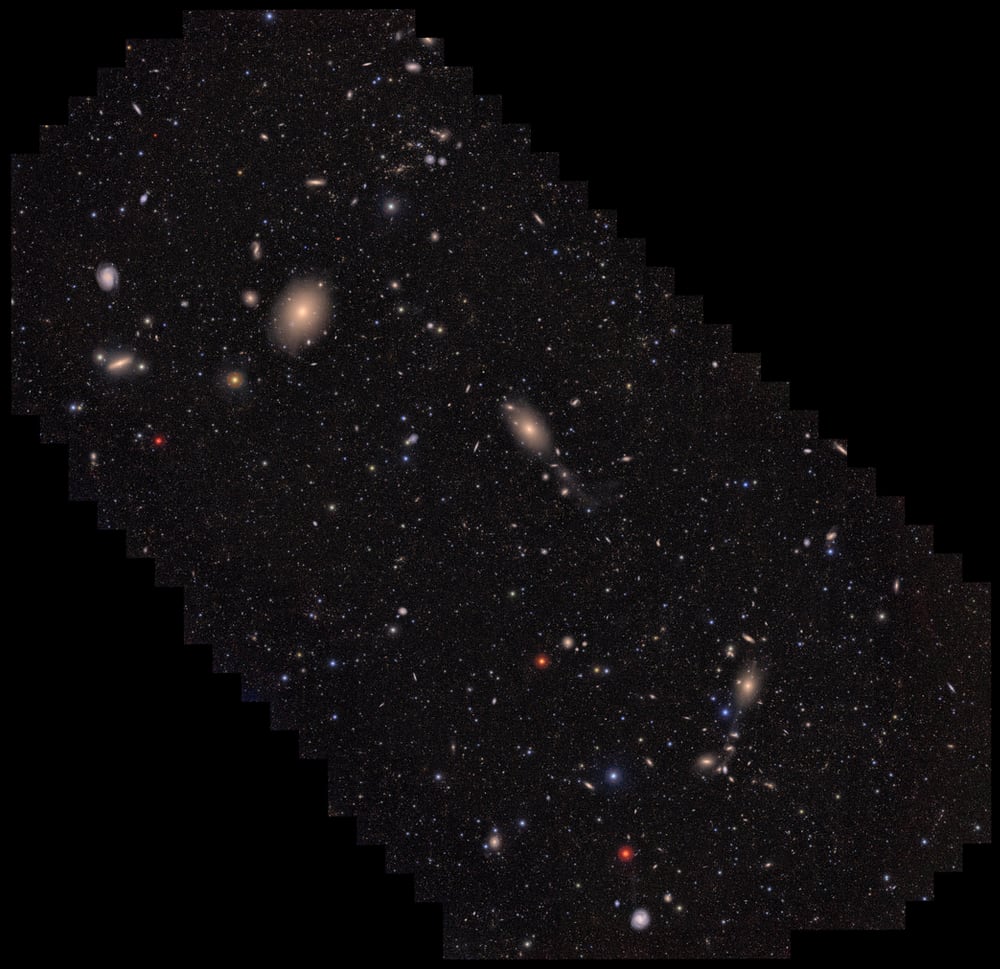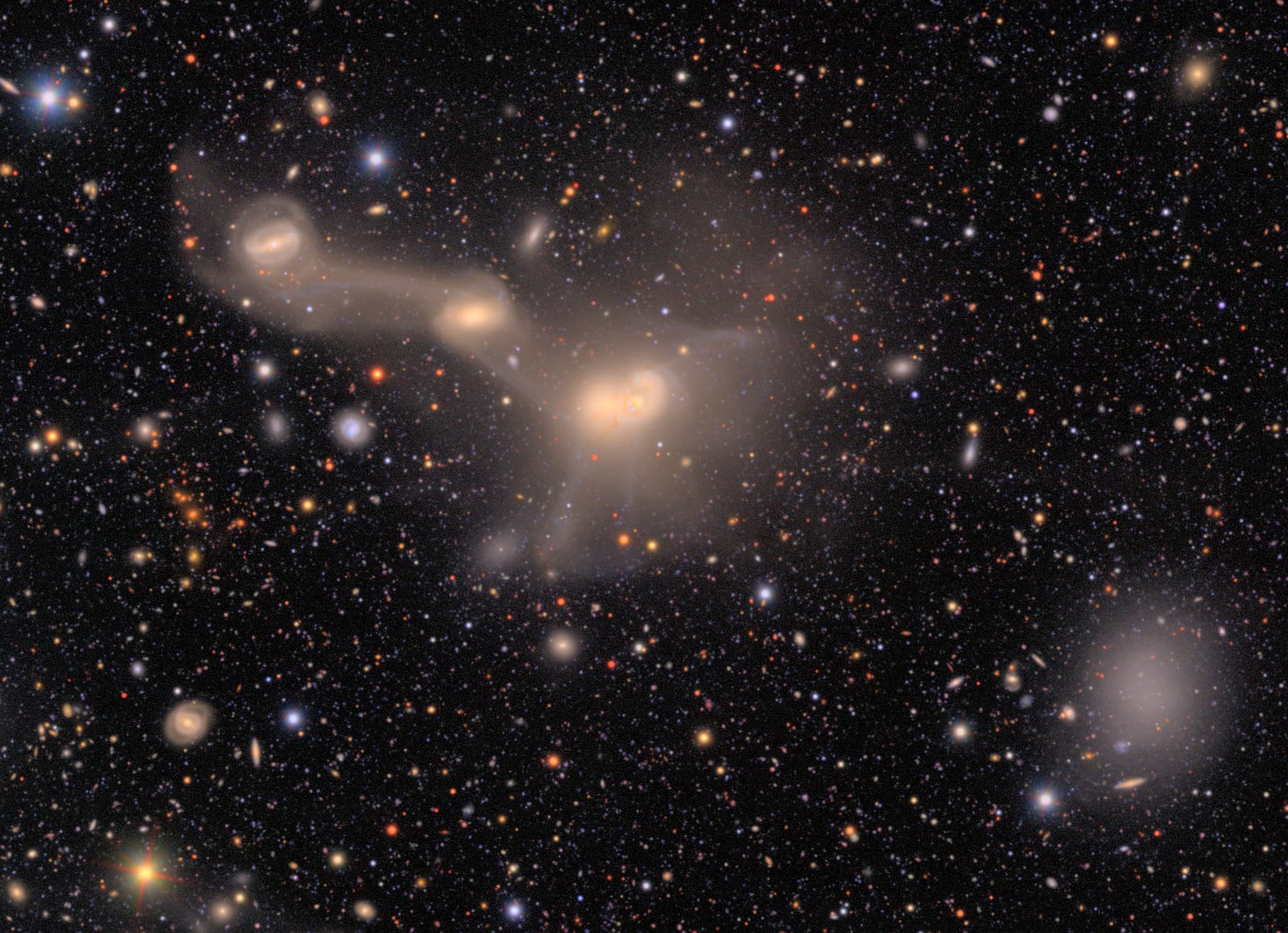Vera shows off
The Vera C. Rubin Observatory is a huge new telescope in Chile, with near magical new capabilities. It has an 8.4-metre mirror (on of the largest mirrors ever made), and a 3.2-gigapixel camera (biggest so far), with specs that give it an extremely wide-angle view of the sky at 3.5 degrees.
For contrast, Hubble is famously narrow: it has always shown us extremely tiny slices of sky, but with exceptional sensitivity and clarity. The new Rubin ‘scope is the opposite: amazing sensitivity to light across giant chunks of sky.
You can see some of the amazing early results in this more detailed introduction from astronomer Phil Plait. But the observatory has also published a nice browser for exploring their enormous images. Here’s the entire first image for context, but zooming is needed:

So I zoomed into an interesting chain of galaxies here:

And this is what they look like up close (this link takes you to that view in the browser), showing only about one eightieth of Rubin’s full field of view:

Foggy and smeared?
A friend asked about the “foggy” and “smeared” appearance of these galaxies, which reminded me that not everyone knows about that. Some people might even think these images are out of focus! It’s quite the opposite.
The “fog” is the collective light of many trillions of smaller, dimmer stars (far more than the pixels in the image by many orders of magnitude). Most of the galaxy images we have ever seen have shown only that fog of light, with the very brightest individual stars superimposed on it, which are only a tiny fraction of the total. In many cases, even the brightest “points” in galaxies are actually entire clusters of the biggest and brightest stars, represented in an image by just a few pixels! (An amazing phenomenon I have discussed before.)
Every galaxy is also surrounded by a huge halo of much dimmer and more spread out stars. These halos are routinely 2-3x bigger than brighter part of the galaxy shown in most images, and virtually all the older ones. They are just too dim to capture without extreme telescopes, cameras, and exposure times.
But capturing them has been very educational, and beautiful.
That foggy halo also gets “smeared” in a surprisingly literal way, sculpted by gravitational interactions with other galaxies, creating fascinating patterns and especially intergalactic “star streams” — basically smaller galaxies that got too close and were pulled apart like taffy, their stars stretched out in vast arcs across the intergalactic void.
Vera will show us these structures nicely, because it has the FOV to capture lots of entire galaxies in our cosmic neighbourhood, but also the sensitivity to image their halos and star streams.
It’s going to produce a lot of really amazing pictures.